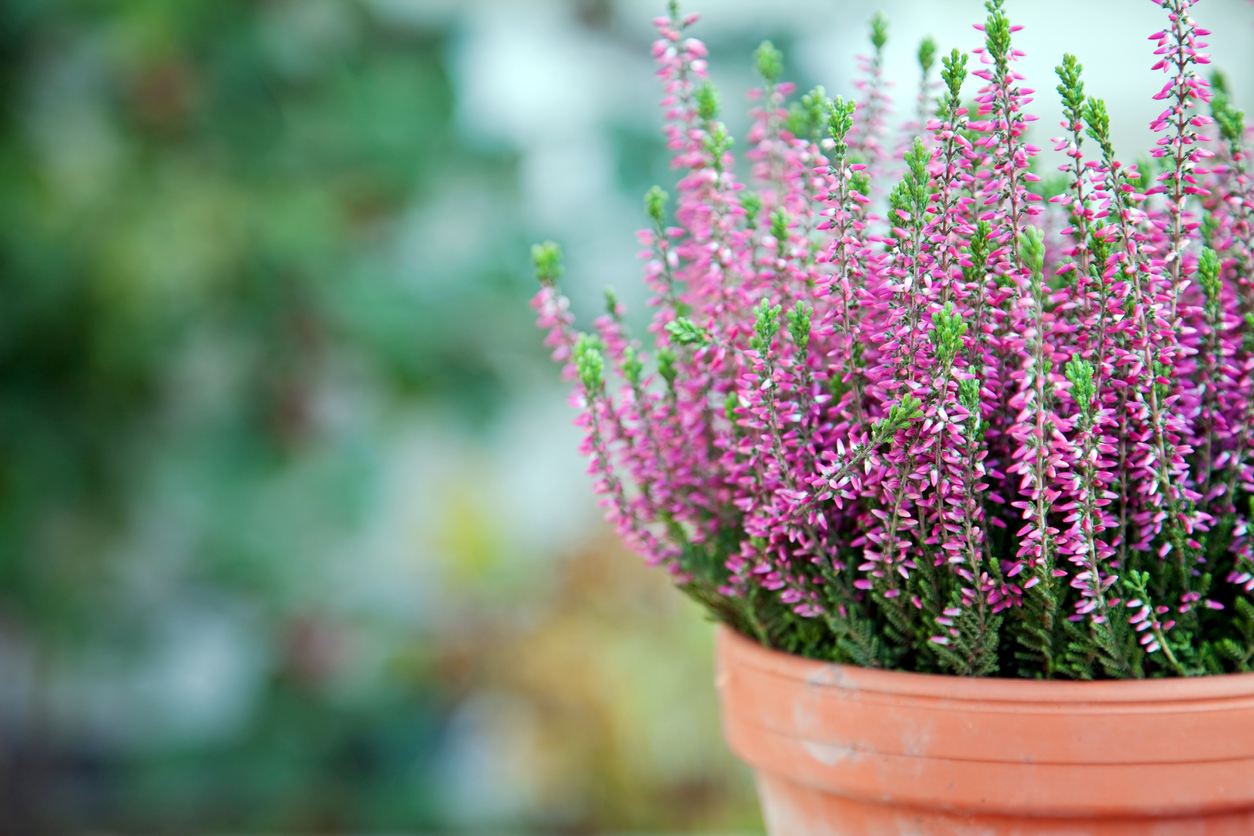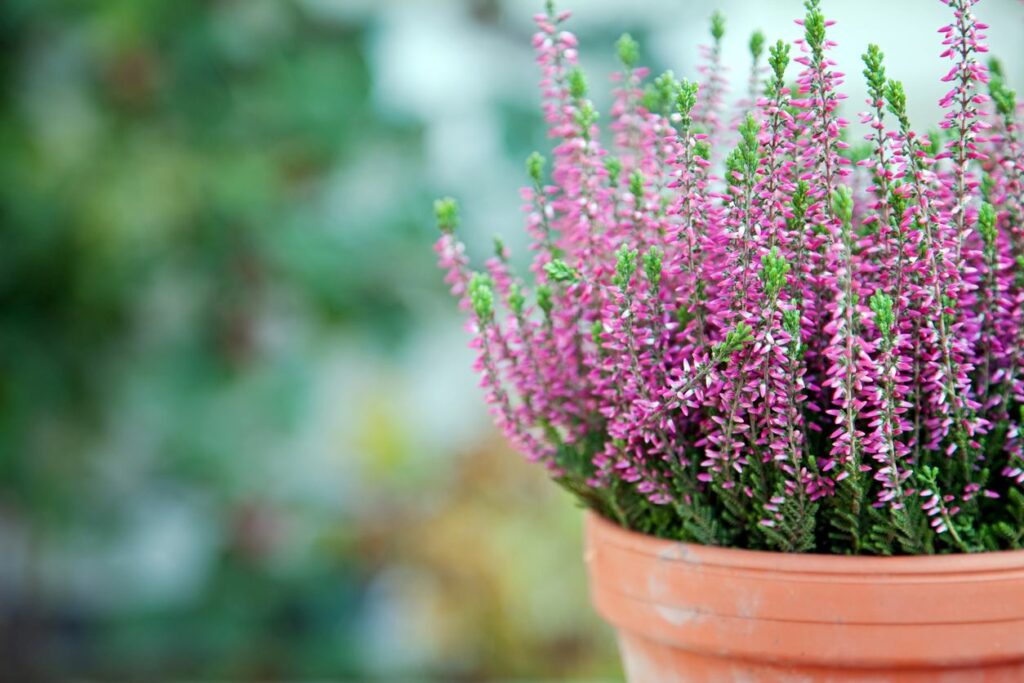Heather Plants: How To Grow And Care For Heather Plants
When you’re looking for a ground cover that keeps your garden looking lush and green, heather plants got you covered. Not only do they serve as an excellent all year round cover, but they also have alluring blooms that attract pollinators and good bugs to your garden. As we’ll see later, their landscaping benefits are only limited by your imagination. And with so many types and varieties, you can create a unique look for your garden.
But it’s not just their look that makes them a favorite plant to grow for gardeners. At the peak of their bloom season, they fill the place with aromatic and spicy scents that waft through open windows and advertise your garden to bees and butterflies. And when you consider that they are hardy, cold-tolerant, and are not fussy about soil or feeding, you will be tempted to grow them in your garden.
Heather Plants at a Glance
Heather plants (Calluna) are evergreen shrubs distinguished by their low growth and branching foliage. And while you’d want to have your garden looking green all year round, after a while, you long for a change. Here too, heathers come to the rescue. These shrubs tend to change color between seasons. And when the flowers bloom, you will have a different looking garden altogether.
Native to Ireland, the fully grown plant reaches about 2 feet tall and 3 feet wide. And you might be surprised to know that all heathers you see growing in gardens are actually cultivars of one species. The cultivars are a more attractive choice for gardeners for many reasons. They are cold-resistant, shed off saltwater like it was nothing, and when the roots establish, you won’t have to worry about watering it that often.
In fact, there are about 500 cultivars of heathers available in the market and ready to grow. Most of these cultivars bloom in the summer. The flowers come in a wide variety of colors from red and rose to white and purple. As for the foliage, as we mentioned it doesn’t stay green all the time. Sometimes it will turn fiery orange and give your landscape a majestic look in the setting sun.
Heathers and Landscaping
While the blooms of the heather plants are a major attraction for gardeners and pollinators alike, it’s actually the foliage that should be your main focus. For example, you might choose to grow a variety called “Firefly” because it changes foliage color from copper in the summer to deep red in the winter. With such a variety of color from just one cultivar, you can imagine what you can do with a few select cultivars that each acquire a different shade.
In the winter when most other ornamental plants are either dormant or looking weary, your heathers will radiate different shades of bright and lively colors. This makes them ideal for pathways and open areas in your garden. Some experts recommend pairing them with conifers.
Heather Plants Varieties
You have plenty of choices when it comes to selecting a heather plant to grow. In fact, why settle for just one when you can mix and match a few cultivars to create the landscape you aspire for? In general, heathers and heaths are often mistaken for each other. Heaths are usually smaller and less colorful than heathers.
- Erica: Also called winter heather, it has fluffy foliage that changes color from winter to summer. Some varieties bloom in the summer while others have their flowers open up in the winter. By growing different blooming varieties you can have bright flowers all year round.
- Daboecia: These varieties have green foliage but the flowers bloom in white, lavender, and purple. They can tolerate partial shade although they favor full sun. Their flowers bloom from the mid-spring all the way to the fall. They look like bells and look their best when grown near ponds.
- Calluna: The more popular of all heather types. The shrubs have different shapes, sizes, and colors. This is the recommended type to grow in your garden thanks to their high tolerance to the cold. They also thrive even in rocky or poor soil. Most varieties bloom in the summer and early fall.
How to Grow Heather Plants
The majority of heather plant cultivars have USDA hardiness zones between 4 and 6. This makes them ideal for cold to moderate climates. However, some cultivars can grow in hardiness zones between 3 and 10 allowing them to grow in diverse climates and weather conditions. Since they vary so wildly, it’s better to learn more about the cultivar you choose before planting it.
- No matter what type of soil you have in your garden, you should till it before planting heathers. Use a spade or a hoe to break the top 6 inches of the soil and let it rest.
- Choose a sunny spot that faces either the south or west since most cultivars prefer full sun.
- Dig a hole in the soil twice as deep and wide as the root ball of the plant you got from the nursery.
- Ease the plant out of the pot it came in and check the root system. Tease the roots to help them spread out and fill the hole.
- Place the plant in the hole and fill it with soil. Pack the soil firmly around the plant to push out any air pockets.
- Make sure the foliage is as close to the ground as possible. If it rests on the soil, that’s even better.
- Water the soil to help the plant rest but avoid soaking it. The roots of heathers are notoriously sensitive to waterlogged soil and root rot is a common problem as we’ll see later.
- Cover the soil with a thick layer of mulch. Choose an acidic mulch such as pine needles since heathers prefer slightly acidic soil.
- Keep the soil moist until you see new growth. The plant will need regular watering in the first few months until the roots establish. After that you won’t have to worry about irrigation.
Heather Plants Care
While planting heather plants is easy, caring for them is even easier. As long as you have picked the right spot that gets enough sunlight, you will not have trouble with this bush. Also, keep in mind that some cultivars can thrive in partial shade. That’s how easy it is to grow and care for heathers.
Soil
For the most part, your heather plants will need slightly acidic soil. You can test your soil before planting to make sure they have the right texture and acidity. The pH levels should be between 5.5 and 6.5. If your soil is not acidic enough, you can mix in a good portion of peat moss to bring the pH to the optimal levels. Make sure the soil is sandy and loose. If it’s too heavy or clay soil, you can add perlite to give it the right texture and improve drainage. Rich soil is not a prerequisite to grow heathers successfully. They can thrive in poor or even rocky soil.
Light
Heather plants need as much sun as they can get. That’s not surprising for a flowering bush that can bloom even in the winter. While some cultivars are hardy and can tolerate partial shade, it’s best to choose the sunniest area in your garden to grow these evergreen bushes. On average, heathers need about 6 hours of sun every day. As we mentioned this is usually a spot in your garden that faces either the west or south. If you live in a rather hot area and you fear the afternoon sun will impact the bushes, then partial shade in the afternoon will be ideal.
Fertilizer
For the most part, you won’t need fertilizer if the soil is acidic enough. Experts recommend you add a little amount of mild and non-burning fertilizer when planting heather plants to encourage the roots to grow. If the soil is too alkaline you can add fertilizer in March or April before the growing cycle. Mulch, especially rotten leaves can provide the plant with a slow-release fertilizer that feeds it for weeks if not months. You can also use mulch to keep the soil moist and prevent the spread of weeds and invasive plants.
Pruning
While you’d want to keep the heather plants in good shape and trimmed, it’s recommended that you wait for the flowers to fade before you prune them. Then you can trim them back as far as you can go to the base of the stem. You also need to consider that these evergreens tend to become leggy and woody after a few years. Once that happens, they will not grow new shoots and lose their allure and luster. It’s best to grow new plants from scratch and try to revive the old ones. You could also use a cutting from the old plant to start a new one.
Pests and Diseases
Surprisingly enough, the pests you will get when growing heather plants are not your average garden variety of aphids and spider mites. Rather, it’s the rabbits and deer that will give you a big headache. They feed on the bushes and stems leaving them bare and looking anything but appealing or attractive. Consider keeping a fence around your garden to keep these voracious animals out.
As for diseases, the most common health issue you will encounter is Phytophthora root rot. It’s a common disease caused by a fungus that resides in the soil. Since heathers have sensitive roots that don’t tolerate soaked soil, root rot is a problem you have to be wary of. Symptoms include yellow and falling leaves as well as wilting stems. Hold off watering the plants until the soil dries out.

